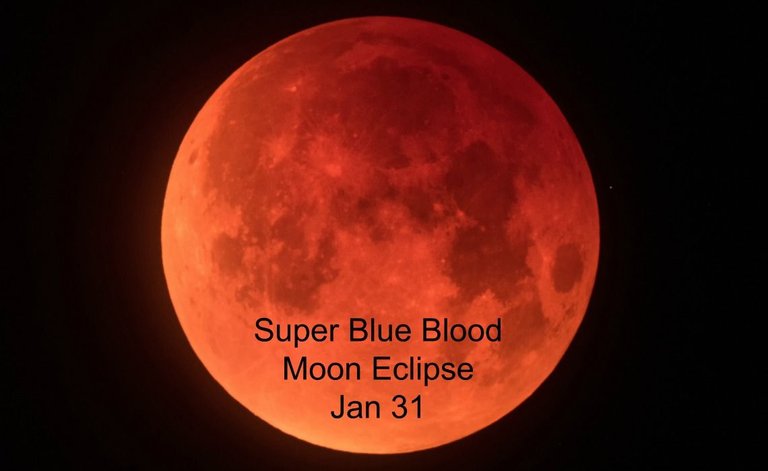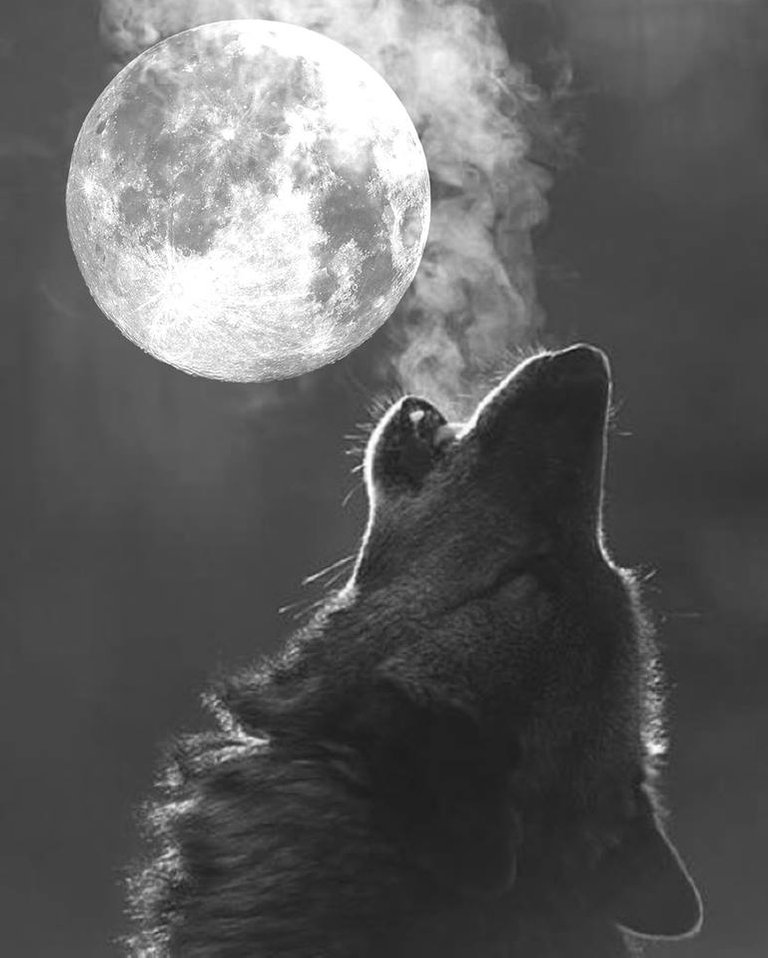We have something lovely to look forward to tomorrow, a Super Blue Blood Moon will be in the heavens above.

Although, this moon is named a "blue" moon, the moon will actually have a red appearance, so it's blue in name only!
A common definition for a blue moon is a second full moon that occurs in a month.
We had our first full moon, affectionately nicknamed "Wolf Moon" for howling wolves on the first day of this new year, January 1st, 2018.

In addition, there will be a total lunar eclipse on January 31st, 2018, making for a truly unusual month!
The precise instant of the blue moon for this month is 8:27 A.M. (Eastern Time) - 13:27 UTC.
Naturally, the hour differs by time zone.
The January 31, 2018, Blue Moon will undergo an eclipse. But – by the time that you read this post – the full moon instant and the total eclipse of the moon might already have passed. For more about the eclipse, go back to yesterday’s sky post.
From the Americas, the moon that we see on the evening of January 31 is actually a waning gibbous moon, though it’ll likely appear plenty full to the eye. That bright star near the January 31 moon is Regulus, the constellation Leo the Lion’s sole 1st-magnitude star.
A super moon is also what astronomers call a perigean full moon.
A supermoon occurs when it falls in the range of 90% to 100% full. The moon also has to be in perigee, its closest point to the Earth.
This is the first time since December 1982 that we've had such a celestial event. The first time in over 150 years for North America.
On Tuesday, Jan. 30, the moon will be 223,069 miles from Earth. Thus, the full moon on Jan. 31, will appear 7 percent larger and 14 percent brighter.
People in the northern part of the U.S. west coast, Alaska, Australia, China, and Japan will have the best views of the celestial event. People will be able to see the entire eclipse. Those in the western parts of South America, North America, India and eastern Eurasia will see a partial eclipse.
Large parts of South America and Africa will not be able to see the celestial event.
Totality will last a maximum of an hour and 12 minutes.
There will be online webcasts of the celestial event for those who will be unable to witness it from their location.
Slooh and the Virtual Telescope Project will be webcasting live throughout the event.
The next total lunar eclipse will be July 27. It will be visible from Australia, Asia, Europe, Africa, and South America. It will not, however, be a Super Blue Blood Moon. NASA does not know when this trifecta of events will occur again. It is possible it may not be in this lifetime.
Sources: GuardianLv.com, Earthsky.org, SiouxCityJournal.com
Nice to see you here! 😍
Hey there! It's good to have you! Thanks for the follow! I know you probably read my post about where we need to boycott Facebook and get everyone migrated over here to Steemit! Tired of seeing good people winding up "Facebook jail", there's no censorship here so we don't have to worry about that nonsense!
I'm following you, and you are my 400th follower!!
Keep Steeming!
I see this as a great way to support one another on many levels. Great to be connecting with you here. 💚 I am kind of bored with Facebook really. I use it to share still for those that I have good relationships with, but overall it has lost its appeal to me.
Same here, I'm mainly on there because so many that I consider great friends haven't made the transition yet! Promoting hard to get them on board!
I have shared it as well, but only a few have come over. In their own time. I guess it is hard to let go of FB. For some.
Once I can get everyone I love the most on this platform, I am leaving Facebook for good! =)